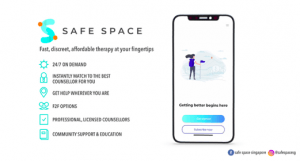Lately, it seems that technology has been contributing to our health and communication given the current circumstances. In-person classes and doctor’s appointments have shifted to virtual platforms. We’re meeting with friends and colleagues through Zoom and getting most of our work done through laptops and computers.
Technology plays such an important role in public and global health topics and initiatives. For example, the health technology initiative aims to help make health technologies benefits available to communities with resource-limited settings in order to control and prevent important health issues. This initiative is also designed to diagnose and treat diseases and illnesses. The two objectives of this initiative are to:
- Challenge the international community to establish a framework for the development of National Health Technology Programs that will impact the burden of disease and ensure effective use of resources
- Challenge the business and scientific community to identify and adapt “innovative” technologies that can have a significant impact on public health
Another important impact on public and global health is the enhancement of medical devices. Devices such as x-rays, MRIs, vaccines, life support equipment, and surgical machines are just a few examples of the huge impact technology have had on the health of everyone worldwide.
People are able to carry EpiPens in case of an allergic reaction; people can have pacemakers implanted after a heart attack to control their heartbeat. It truly is amazing how far technology has come and how it has helped shape the lives of everyone around us.
The most important target groups for such products are people living in low-income countries because their financial resources are limited and their countries typically have health systems that are poorly organized. In addition, there are an existing number of low-cost but highly effective interventions that are not used widely enough. For example:
- Reducing infant morbidity and mortality by promoting exclusive breastfeeding for 6 months
- Reducing neonatal deaths by training birth attendants in resuscitation, keeping the baby warm, and the provision of antibiotics for infection
- Reducing child deaths by expanding vaccination coverage with the 6 basic antigens and rotavirus and pneumococcal vaccines
- Reducing maternal disability and deaths by higher identification of complications, speedy transport to the hospital, and appropriate emergency obstetric care
These simple interventions can help save the lives of infants and children in low-income countries.
Further, improvements in information technology, genetic and molecular epidemiology, robotics, and chemistry will facilitate the development of new and better antibiotics and other drugs and medications. They will allow scientists and doctors to better understand the nature of disease, as well as to enable them to quickly try different chemical compounds to address these pathogens. That being said, there is an increasing understanding of the promise of science and technology for improving global health, in particular:
- Affordable and appropriate technologies in low- and middle-income countries
- Addressing the most pressing health needs
- New technologies being developed in the next 5 to 10 years to improve health
- Advance knowledge on the technological benefits
Not only is technology beneficial for the invention of new drugs, but also for ‘safe spaces’ for people feeling stigmatized by certain health problems, including mental health issues. SafeSpace is an app designed for just that – an on-demand counseling app that connects people to professional counselors and therapists in a space where they feel safe. This helps people feel safe and they can connect with professionals from any location.
Especially during these difficult times of racism, police brutality, and anxiety and depression from the COVID-19 pandemic, it is crucial to get the help and support we need without any judgement or fear.
Counselors and therapists have also moved their sessions to online platforms to continue meeting with their patients without the fear of spreading the coronavirus. Further, technology is a way people can stay connected with others all over the world; several online platforms can be used as a ‘safe space’ and can be used to seek support for almost any problem.
Apps are also used for patients to make doctor appointments, to shop online for groceries, etc. They have shown even more helpful during these times.
Finally, emergency communication, disease monitoring and surveillance, and access to health information are all important aspects of science and technology. We need technology to continue to improve our research and our health, both physical and mental. It is also important to make these technologies accessible to people living in poorer countries to provide them with better medical resources. Thus, science and technology have the potential to make major contributions to the development of diagnostics, vaccines, drugs, and medical devices that can help address the highest burdens of disease in low- and middle-income countries. Technology has already made great contributions to science and medicine, but there are always areas of improvements and benefits to new developments.


There are no comments yet...Kick things off by filling out the form below.